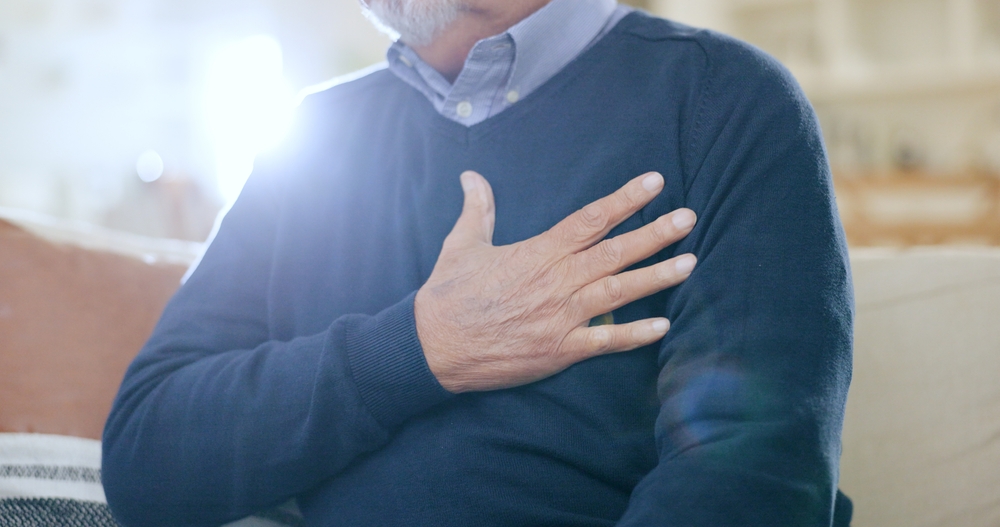Make an Appointment
What Is Muscle Twitching?
Muscle twitching, also called muscle fasciculation, is an involuntary contraction of muscle fibres. Most of the time, it’s harmless, short-lived and often an outcome of muscle fatigue. You might notice your eyelid flickering, your calf cramping overnight, or a random muscle in your arm twitching after exercise.
While common muscle twitches usually resolve on their own, in rare cases they can signal a more serious medical condition.
Common causes of muscle twitching
Minor muscle twitches are usually linked to everyday lifestyle factors. Some of the most common include:
- Exercise fatigue: Intense activity can build up lactic acid in the muscles, often affecting the arms, legs, or back.
- Stress and anxiety: Emotional tension may trigger spasms in various parts of the body.
- Vitamin or calcium deficiencies: Low levels of these nutrients can cause twitches in the calves, hands, or eyelids.
- Caffeine and stimulants: Overuse of coffee, energy drinks, or pre-workout supplements may lead to spasms.
- Dehydration: One of the most frequent causes of shaky muscles.
- Nicotine and tobacco: Both can irritate the nervous system and cause twitches.
- Medications: Certain drugs such as corticosteroids and estrogen may increase twitching.
- Individuals who are on intense training regimes. This could include gym workouts to professional athletes.

More serious causes of muscle twitching
Muscle twitching could mean more than just a twitch in the eye. Some muscle spasms could be a symptom of a more serious issue.
Although uncommon, persistent twitching can indicate underlying neurological or muscular disorders. These conditions affect the nerves that control your muscles:
- Amyotrophic lateral sclerosis (ALS / Lou Gehrig’s disease): A progressive neurodegenerative disease marked by nerve cell loss, leading to muscle weakness and continuous twitching. (Source: Healthline.com)
- Muscular dystrophies: Inherited disorders that lead to gradual degradation of muscle tissue and may trigger spasms in areas like the hips, neck, or face. (Source: Healthline.com)
- Isaac’s syndrome (neuromyotonia): A rare autoimmune condition characterised by spontaneous and frequent muscle contractions, often mistaken for more serious motor neuron diseases. (Source: Wikipedia)
- Spinal muscular atrophy (SMA): A genetic disorder marked by degeneration of spinal motor neurons, resulting in muscle weakness, fasciculations, and progressive loss of movement control (Source: NHS.uk)
If persistent muscle twitches are causing concern or affecting your daily life, don’t wait, support is available.
Physio Inq offers tailored care across multiple disciplines:
- Physiotherapy – Targeted muscle and nerve rehabilitation
- Exercise Physiology – Personalised movement plans to improve function
- Speech Therapy – For cases where twitching affects speech or swallowing
- Occupational Therapy – Strategies to manage daily tasks with ease
Ready to take the next step? Call us today on 1300 731 733 or use our online booking form to schedule your consultation and begin your path to relief and recovery.
How to treat muscle twitching?
At-Home Treatments and Remedies
If you don’t have an underlying medical condition, there are many simple ways to manage and prevent muscle twitching.
Lifestyle and Nutrition:
- Eat a balanced diet with fruits, vegetables, complex carbohydrates, and protein.
- Stay hydrated and restore electrolytes.
- Reduce caffeine, nicotine, and alcohol.
- Get 6–8 hours of quality sleep each night. Optimal sleep helps your body recover and heal faster.
- Manage stress through yoga, meditation, or deep breathing.
Stretching and Physical Remedies:
- Hamstrings: Sit with your legs straight, reach forward, and relax the muscle. Use a strap or belt if needed.
- Calves: Point your toes upward while keeping legs extended to stretch the calf muscles.
- Back: Use a tennis ball on the affected area or relax over an exercise ball.
- General: Use a foam roller to massage and relax tight muscle tissue.
Hot and Cold Therapy:
- Ice pack: Apply for 15–20 minutes to reduce inflammation.
- Heat pack: Apply for 15–20 minutes to relax the muscle, followed by ice if needed.
- Sauna or hot tub: Can also help loosen stiff muscles.
Other At-Home Remedies:
- Pickle juice: Restores electrolytes and may relieve cramps in under a minute.
- Chamomile tea: Promotes relaxation and better sleep.
- Supplements: Magnesium, vitamin B-12, or salt tablets may reduce twitching if you’re deficient.
When to See Professional Advice:
Most muscle twitches are harmless, but you should seek medical advice if you notice:
- Frequent or painful spasms
- Twitching that doesn’t go away with rest or lifestyle changes
- Weakness, loss of coordination, or other neurological symptoms
Before your appointment, keep a log of:
- How often twitches occur
- How long they last
- Any patterns (e.g. after exercise, at night, after caffeine)
How to Get Muscles to Stop Twitching
Stretch It Out
- For hamstrings, sit down and place your legs straight out in front of you. Reach forward for your toes and relax the muscle as much as you can. If you have tight hamstrings, try using a belt or tie for help. Loop it around the bottom of your feet and pull your chest down.
- For calves, do the same stretch above. Instead of your focus being to pull your chest down to your legs, you are going to focus on pulling your toes back towards you and flattening out your back. The more you pull back your toes the more you will feel it in your calves.
- For the back, you have two options. Lay on a tennis ball directly on the area that is spasming or relax back on an exercise ball. Let your arms fall out to the side and keep your feet on the floor for balance.
- For any muscle not mentioned above, use a foam roller and massage out the muscle tissue. Make sure to relax and breathe into the muscle.
Try Hot and Cold Therapy
- Ice: Place an ice pack (wrapped in a towel) on the muscle spasm for 15-20 minutes. Do this a few times a day for a persistent spasm.
- Ice helps to reduce inflammation and while heat helps to relax and ease the pain.
- Heating pad: While this will feel good and help ease the pain, make sure to only leave it on for 15-20 minutes. After that, make sure to put an ice pack on the reduce any inflammation.
- Sauna and hot tubs: Great for helping the muscles relax if you have access to them!

Frequently Asked Questions:
What is the most common cause of muscle twitching?
Fatigue, dehydration, and stress are the leading everyday causes.
Are muscle twitches a sign of a serious condition?
Rarely, but twitching can sometimes be linked to neurological diseases like ALS or muscular dystrophy.
How do you stop a muscle from twitching?
Hydration, stretching, and rest are usually effective. Supplements may also help if you’re deficient.
Can dehydration cause muscle twitching?
Yes. Lack of fluids and electrolytes is one of the most common triggers.
When should I see a doctor?
If twitches are persistent, painful, or accompanied by weakness and other symptoms.
Muscle twitching is usually temporary and manageable with simple lifestyle adjustments like stretching, hydration, and relaxation. However, persistent or painful spasms may point to a more serious condition and should be checked by a healthcare professional.
If muscle spasms are interfering with your daily life, reach out to one of our experienced therapists at Physio Inq can help. You can call us on 1300 731 733 or use our online booking form to schedule your consultation and begin your path to relief and recovery.
Date Published: Thursday, May 18, 2017
Date Modified: Thursday, September 4, 2025
Locate a Mobile Physiotherapy
Service Near me
Get the experience & convinence you deserve to support your or a loved one's allied health needs.
Our Mobile Physiotherapy team are currently serving & taking appointments in the following states and regions in Australia:
Need to get into direct contact with ur Client Services team? We're all ears. Call our team directly on 1300 731 733

















